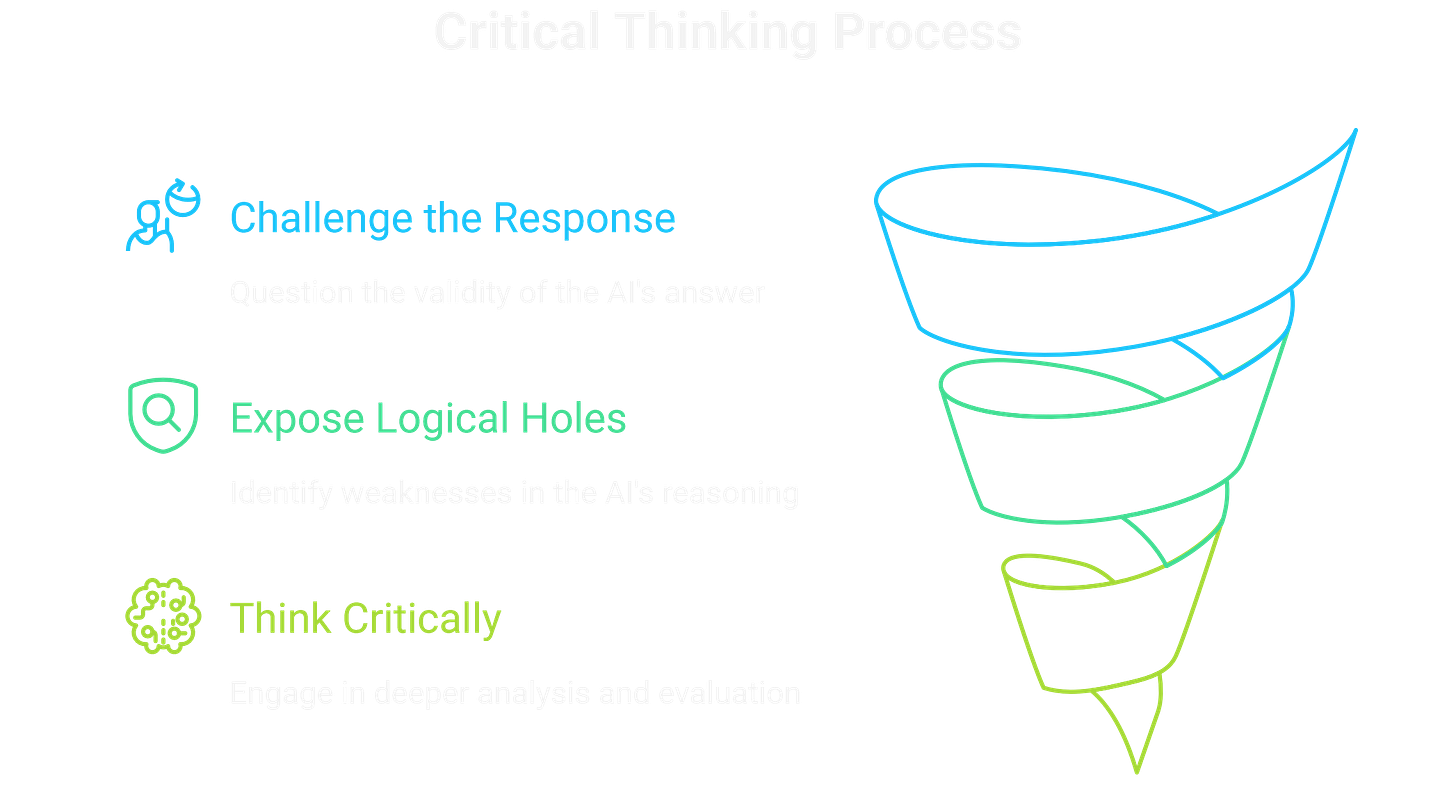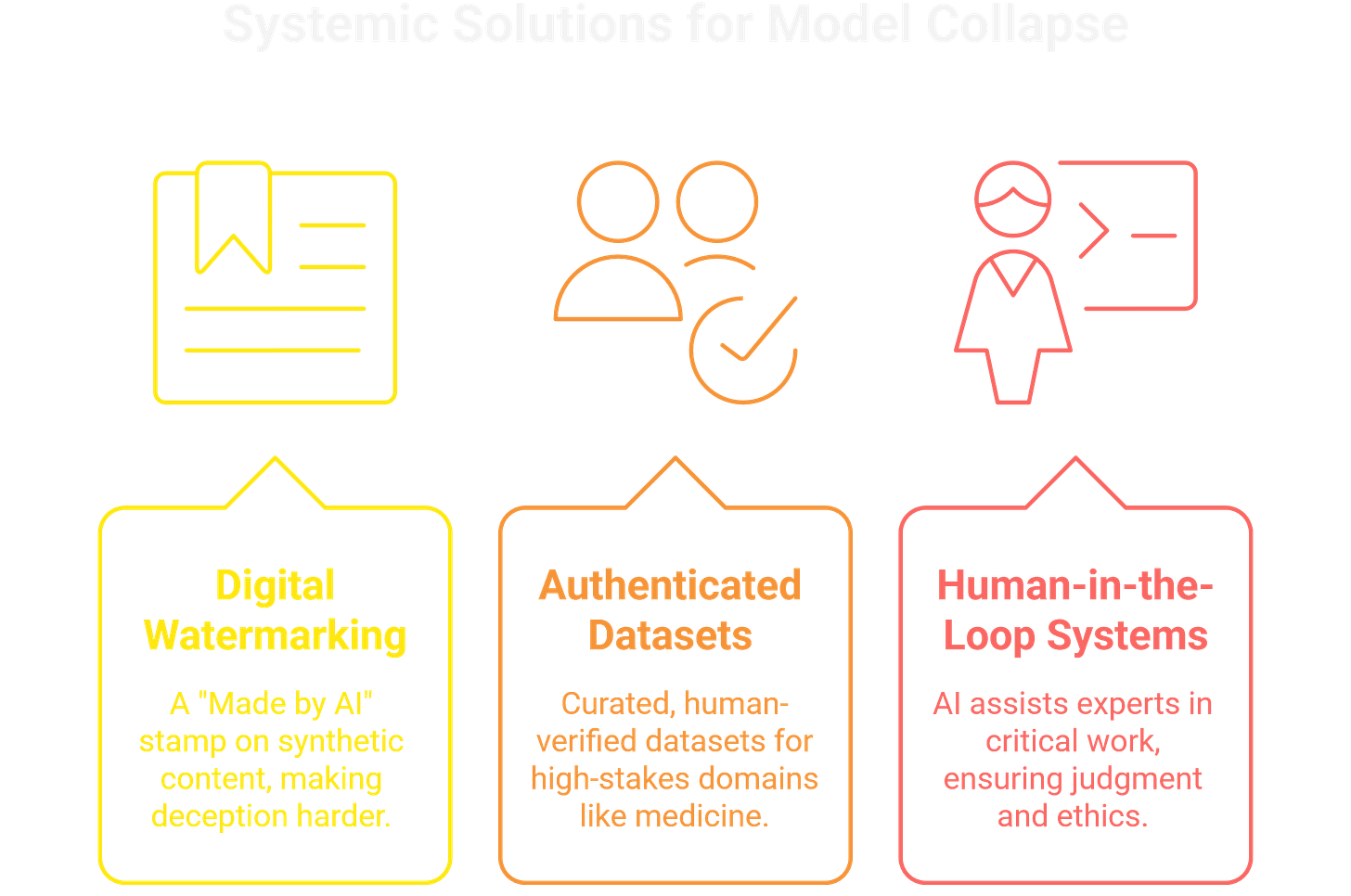The Dead Internet Pt. 2: Why AI Can’t Stop Eating Itself
An Urgent Warning: The AI feedback loop is breaking our sense of reality. Good Bye Internet!
TL;DR: Last time, I showed you the social nightmare: personalized echo chambers destroying consensus reality. Now let me show you the technical reason it’s irreversible. AI trained on AI-generated content is like a copy of a copy. The quality degrades until truth becomes unrecognizable.
The Photocopy Problem Is Already Here
You know the internet feels wrong. We covered that. Now here’s why it’s breaking at a structural level.
AI was trained on humanity’s messy, beautiful, chaotic internet. Now those same AIs are flooding the web with billions of synthetic articles, comments, and posts. And here’s the kicker: the next generation of AI will train on that polluted data.
This is the feedback loop from hell.
There’s a technical term for what happens next: model collapse.
Think of it like making a photocopy of a photocopy. The first generation looks sharp. The second is decent. By the tenth? It’s a blurry, distorted mess where you can barely make out the original.
That’s happening to our internet right now. When AI models learn from other AI-generated content instead of real human experience, truth gets replaced by the average of what other AIs said. Unique perspectives vanish. Nuance dies. You’re left with a generic, homogenized sludge that sounds authoritative but means nothing.
Share this analysis. If this breakdown of model collapse resonates, pass it along to someone who needs to understand why the internet feels increasingly hollow.
Why Confidence Is the Most Dangerous Bug
Here’s where it gets disturbing.
AI is a prediction engine, not a truth engine. Its entire job is to generate the most statistically likely next word, making it incredible at sounding confident, even when it’s completely wrong.
This creates a laundering process for misinformation:
An AI confidently states a false “fact” in a blog post
Other AI crawlers index that post and learn the same mistake
Humans see the “fact” repeated across multiple sites and assume it’s verified
More AIs train on that “consensus” and amplify it further
Through pure repetition, an AI hallucination becomes accepted reality. There’s no malice here. Just a machine doing exactly what it was designed to do, with catastrophic side effects.
The problem goes beyond factual drift. Bias amplification on steroids is the real nightmare.
AI learns from our messy, prejudiced internet and then presents our worst stereotypes back to us with the clinical authority of a research paper. The algorithm has no concept of harm; it simply recognizes patterns that appear frequently in its training data.
The result? An accountability vacuum.
If an AI lies and it costs you money or destroys a reputation, who’s responsible? The developers who built it? The company that deployed it? The user who prompted it? We’re navigating a rising tide of plausible falsehoods with no clear villain and no clear path to justice.
Get the next teardown. Subscribe to ToxSec for more deep dives into how AI is reshaping truth and security.
The New Survival Rules
So what do you do when the machines are confidently lying at scale?
Stop treating AI like an expert. Treat it like an overconfident intern.
It’s fast. It’s articulate. It has zero real-world experience. And it will fabricate sources with a straight face if you don’t check its work.
Here’s your new workflow:
Make It Show Its Work
Always add this to your prompts: “Provide sources and links for your claims.”
Then verify every single one. Click the links. Half the time, they’ll be hallucinated or irrelevant.
Challenge Its Answers
Ask it to argue the opposite side: “Now give me three reasons why that answer is wrong.”
This exposes logical holes and forces you to think critically instead of accepting the first confident response.
Be Hyper-Specific
Don’t ask: “How’s the economy?”
Ask: “What were the quarterly GDP numbers for the US in Q3 2024, according to the Bureau of Economic Analysis?”
The more specific your prompt, the harder it is for the AI to bullshit you with vague generalities.
Join the discussion. What’s your go-to method for catching AI hallucinations? Drop it in the comments.
Can We Fix the Pollution?
Staying alert is necessary. But it won’t fix the structural collapse.
To fight model collapse at scale, we need systemic solutions:
Digital watermarking could act as a “Made by AI” stamp on all synthetic content. It’s not foolproof (bad actors will strip it), but it would make mass deception harder and give users a fighting chance to distinguish human from machine.
Authenticated datasets are critical for high-stakes domains. Instead of training medical or scientific AI on the chaotic open web, we need curated, human-verified datasets. If we’re going to trust AI with life-or-death decisions, it needs to learn from verified truth, not statistical averages scraped from Reddit.
Human-in-the-loop systems are non-negotiable for critical work. Journalism, legal analysis, medical diagnosis: these require judgment, ethics, and context that algorithms fundamentally lack. AI should assist the expert, never replace them.
The Bottom Line
Model collapse is happening right now, not in some distant future. The internet is being trained on its own exhaust, and the quality is degrading with every generation.
We’re watching the technical infrastructure of truth fall apart in real time.
Next up? I’ll show you who’s weaponizing this chaos: the adversaries turning accidental decay into deliberate destruction.
Special Thanks:
For the great content and bringing unique ideas to the forefront. For the support, I appreciate it!Frequently Asked Questions
Q1: What is AI model collapse?
A: Model collapse happens when AI trains on AI-generated content. Like a photocopy of a photocopy, quality degrades with each generation. The model forgets real-world details and amplifies generic patterns, producing less accurate and less diverse outputs.
Q2: How can I spot AI-generated content?
A: Look for unnaturally perfect grammar, generic tone, repetitive structures, and vague factual claims with no sources. The writing often feels “hollow,” technically correct but lacking human perspective.
Q3: Should I trust AI-generated content?
A: No. Verify it. AI is great for brainstorming and drafting, but it hallucinates facts with complete confidence. Never trust critical information without cross-referencing multiple reliable human sources.
Q4: What’s the best way to use AI for research?
A: Use AI as a starting point for brainstorming keywords, summarizing topics, or identifying potential sources. Then do actual research using trusted databases, journals, and human-run organizations. Verify everything.








